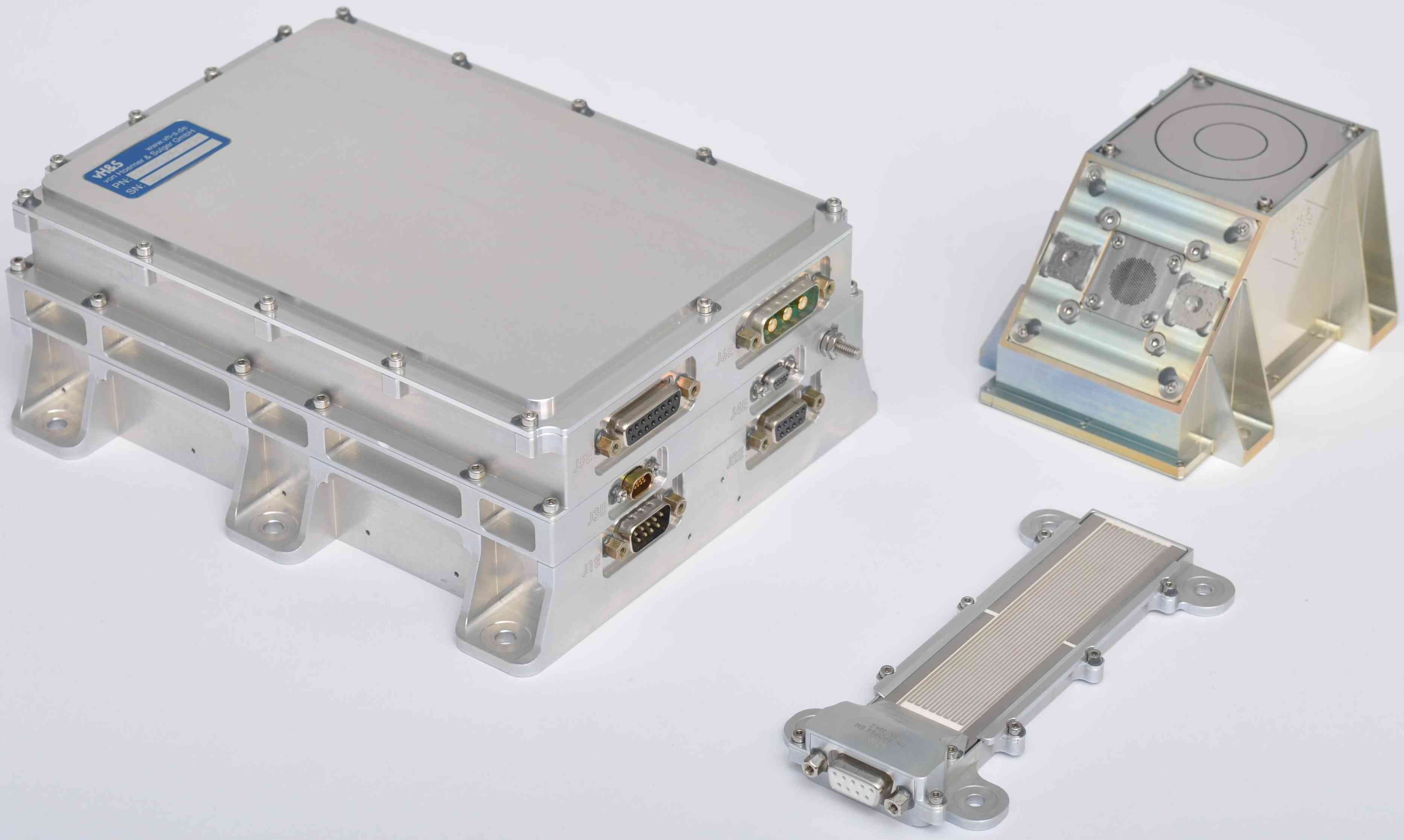EPDP
A joint collaboration of von Hoerner & Sulger GmbH, OHB System AG, and the Christian-Albrechts-Universität zu Kiel (CAU) have developed an Electric Propulsion Diagnostic Package (EPDP) for satellites using electric propulsion systems. The system has been designed and manufactured for the Heinrich-Hertz satellite, successfully launched in July 2023 with the EPDP electronics and sensors on board. Heinrich-Hertz will be equipped with a pair of HEMP thrusters from Thales Electronic Systems GmbH and a redundant Hall thruster.
Purpose
The purpose of the diagnostics is an assessment and better understanding of the interaction of the thrusters with the spacecraft, in particular sputter erosion of satellite surfaces and deposition of sputter products on other surfaces of the satellite. These processes can have a degrading effect on solar cells and impair optical and scientific instruments.
Instrument Description
The EPDP has an erosion sensor based on a resistance measurement of a thin conductive layer. The change of the resistance of a silver meander is monitored during the operation of the thrusters, from which the erosion can directly be calculated. For a characterization of the plasma that causes the erosion and changes the electric field strength at the surfaces, an arrangement of a plane Langmuir Probe (LP) and a Retarding Potential Analyzer (RPA) is used. The Langmuir Probe is integrated into the plane surface of the common sensor head and surrounded by a guard ring. The Retarding Potential Analyzer allows determining the energy distribution function of the plasma ions. It is equipped with four grids, where the outer grid is always at spacecraft potential and integrated into a tilted surface of the common sensor head.
In contrast to typical measurements in test chambers, the three sensors onboard the satellite will not be exposed directly to the beam. They rather measure the dilute backflow from the thruster plume that alters or dominates the plasma surrounding the spacecraft. The diagnostics will be located behind the exhaust plane of the thrusters.
The EPDP project is funded by the European Space Agency under ESA Contract No. 4000126205/19/NL/RA and 4000134972/21/NL/RA/va.
Contact
To request more info, please write E-Mail to Dr. Hartmut Henkel, E-Mail: henkel@vh-s.de.
Links
- EPJ Publication, An in-flight plasma diagnostic package for spacecraft with electric propulsion
- OHB Systems, Infopage Heinrich Hertz
- CAU, AG Wimmer-Schweingruber
